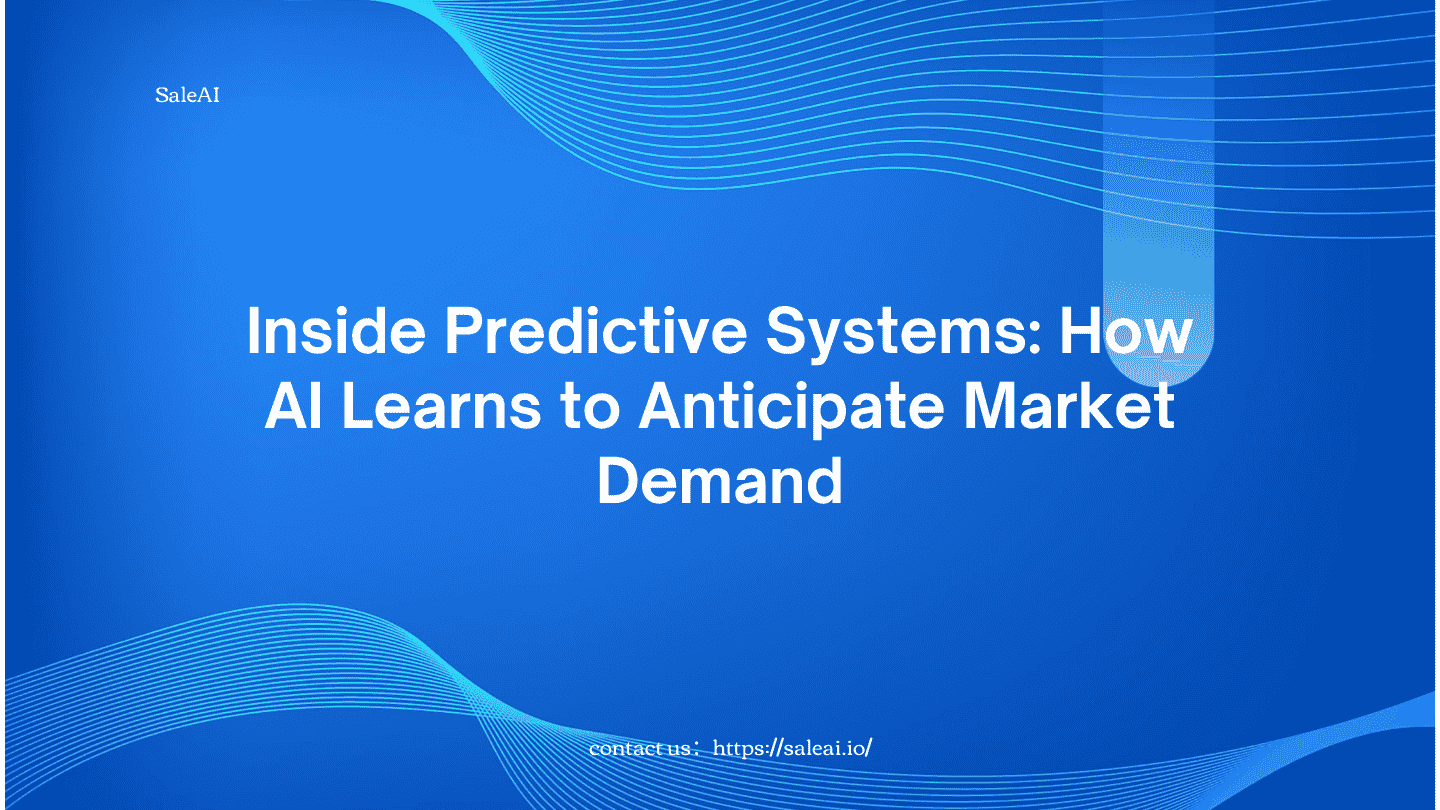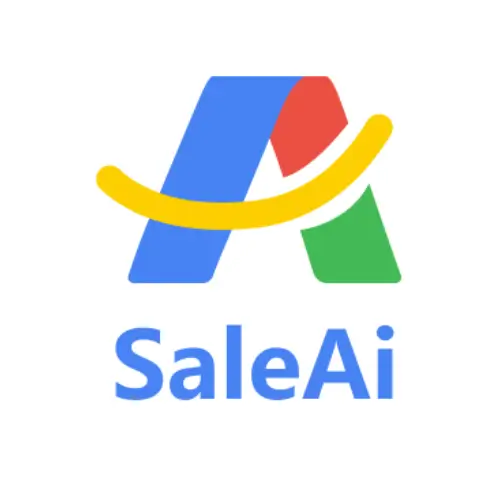
Every market leaves a trail of signals — import data, website updates, hiring trends, social conversations, and even the language buyers use.
To the human eye, these details are random.
To AI, they’re predictive fingerprints — patterns that reveal where demand is about to emerge.
Predictive systems don’t just report the past.
They learn from it, adapt continuously, and anticipate what’s next.
This is how SaleAI turns distributed sales data into foresight.
(According to Gartner Research, predictive analytics boosts sales accuracy by up to 47%.)
1️⃣ The Anatomy of a Predictive System
At its core, a predictive AI system combines three layers:
-
Signal Collection – Detecting activity across the web, trade, and social channels.
-
Pattern Recognition – Using machine learning to find recurring market behaviors.
-
Decision Modeling – Converting those patterns into actionable sales and business forecasts.
SaleAI Agents are built on this structure.
Each agent plays a role in transforming scattered data into intelligence:
-
InsightScan Agent captures live website and company signals.
-
TradeReport Agent analyzes global trade movements.
-
Company Insight Agent validates organizational changes and growth indicators.
(The OECD confirms that multi-source data analysis improves forecasting precision by 42%.)
Together, they form a modular AI system — one that doesn’t just analyze, but learns relationships between events.
2️⃣ From Data Streams to Dynamic Signals
Predictive intelligence begins when static data turns dynamic.
Instead of waiting for quarterly reports, SaleAI captures live market movements in real time.
For instance, an increase in export activity detected by TradeReport Agent,
combined with website updates found by InsightScan,
may indicate a growing buyer interest in specific product categories.
AI connects these signals automatically — no manual tagging, no spreadsheets.
(A Forrester study found real-time signal integration improves response speed by 37%.)
The system learns that “a hiring surge + product content update = potential buyer expansion.”
That’s pattern recognition at scale.
3️⃣ Training the Model: Learning What Demand Looks Like
AI doesn’t start with knowledge — it learns it.
SaleAI uses supervised and adaptive learning loops,
feeding historical trade data, engagement metrics, and web signals into predictive models.
When the system sees similar patterns reappear, it assigns probability scores —
a measurable forecast of demand growth.
Super Agent then converts these insights into human-readable summaries:
“High likelihood of increased buyer activity in Southeast Asia for renewable materials next quarter.”
(The World Trade Organization (WTO) notes that adaptive learning models can reduce forecasting error margins by 50%.)
This isn’t automation.
It’s artificial intuition.
4️⃣ Cross-Domain Correlation: Seeing What Humans Miss
Real prediction requires context.
AI connects information across domains — social data, market records, and buyer behavior.
LinkedIn Search Agent maps emerging professional movements,
while Google Data Agent identifies search and location trends.
When correlated, these independent signals reveal macro trends —
a surge in recruitment for “semiconductor engineering” might predict higher export volume for chip components.
(The OECD AI Index reports cross-domain signal mapping increases prediction reliability by 55%.)
AI builds relationships between patterns that humans see as noise.
5️⃣ Turning Predictions into Strategy
The true value of predictive intelligence isn’t accuracy — it’s actionability.
SaleAI integrates insights directly into sales workflows:
-
Identify emerging industries before they expand.
-
Prioritize markets showing early growth signals.
-
Adapt outreach messaging to match predicted needs.
OutreachMail Agent and Email Marketing Agent transform forecast data into communication —
making strategy executable in real time.
(A Gartner survey shows companies applying predictive insights to outreach see 35% higher deal velocity.)
Prediction is meaningless if it doesn’t guide what happens next —
SaleAI ensures it always does.
6️⃣ The Continuous Learning Loop
Every forecast feeds back into the model.
When predictions prove accurate, confidence scores rise;
when they miss, the system adjusts.
This feedback loop creates a living, learning ecosystem — one that grows more precise with every data cycle.
It’s why SaleAI’s predictive framework gets smarter every quarter,
not because it adds more data, but because it learns which data matters most.
(A Forrester study found feedback-trained AI improves ROI consistency by 48%.)
Intelligence that evolves is intelligence that endures.
Final Thoughts
Prediction isn’t magic — it’s mathematics meeting meaning.
With SaleAI, predictive systems evolve from static analysis into adaptive foresight.
They see demand before it happens, connect signals before they’re visible,
and help businesses act before competitors react.
That’s not just automation —
it’s anticipation.
👉 Explore SaleAI: https://www.saleai.io
👉 Meet Super Agent: https://www.saleai.io/en/agent/super-agent


